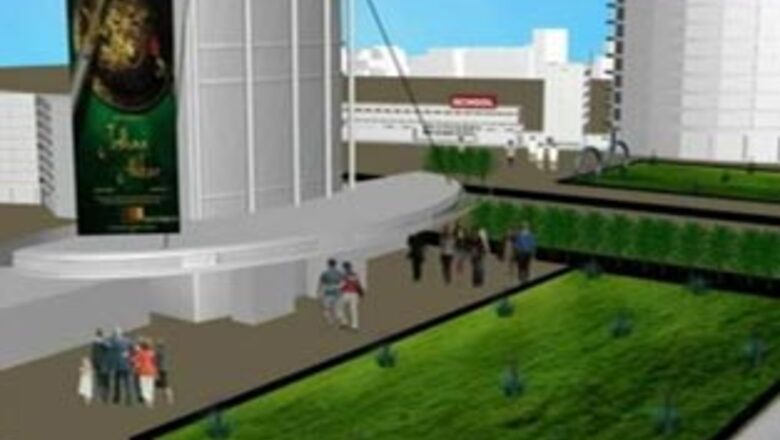
views
The real estate sector continues to remain under duress. While there may be sporadic signs of a turnaround with on-ground residential sales being reported, is the beleaguered sector out of the woods yet?
Responding to the query, Executive Director of Cushman & Wakefield, Kaustuv Roy, a real estate consultancy, said that even as real estate booms and busts were cyclical in nature, "we expect this downward trend to continue till then end of this year or so. Then, as prices stabilise by the year end or 2010 start, things would have recovered by end of 2010," he said. He, however, added, "A lot depends on how the economic changes are and that is when it will kick-start corporates to actually start taking up space, giving job confidence to employees and subsequently employees getting back into purchasing, having the ability and the confidence to go in and make an investment with loans."
Research Analyst – Infra & Realty, Angel Broking, Sailesh Kanani, said the house view on the sector was still negative because of liquidity concerns. "There has been a dramatic change in the business dynamics by itself because of risk aversion by end users. Now, developers have to fund their own projects through their internal accrual. That we think is going to impact growth, which would see only large companies going for expansion and sustaining and coming out of this," he said. "So, there is going to be a cut on the expansion spree, growth would be curtailed and therefore the view on the sector as such is negative at least for the next four to six quarters."
Here is a verbatim transcript of Kastuv Roy and Sailesh Kanani's exclusive interview on CNBC-TV18. Also watch the accompanying video.
Q: What are the telltale signs you are getting from the various cities? Are you seeing any improvement in the housing sector and are you seeing any fall in the fortunes in the commercial sector or is the bottom still to reach?
Roy: In the residential segment, developers who have launched affordable housing projects in the last one month have been able to get some amount of success while developers who have reduced pricing are still to find end-users willing to bite. I guess the expectation is that the prices will fall a bit further and that's the point of time when they'll pick up the projects.
On the commercial side, demand is pretty much down quite a bit and it has been sliding since quarter four last year. We expect it to be subdued. We might see some movements in the bigger cities of Mumbai, Delhi and Bangalore but the smaller cities are definitely going to through a bit of a downturn over there.
Q: You must have certainly gone through the trajectory of the previous fall as well in real estate prices especially in Mumbai. Starting perhaps from 1996 and thereabouts and we didn't see them recover up until 2003-04 and if I remember right what peaked off in 1995 actually bottomed out as late as 2001-02. I may be wrong maybe a year or two, you should correct me on the detail, but how long do you think this downturn can go and how much further in terms of percentage prices first for the housing and then for the commercial?
Roy: What we saw is actually if we see the run from 1991 onwards — 1991 to 1995 — was a bull run over there and we saw prices go up by at least 300 per cent–400 per cent and then it fell down from 1996 to I would say till 1998 or 1999 when it was a continuous fall and after that it kind of steadied out and then picked up in 2001-02 or so.
Over here, what we found is that in terms of the cyclical nature: yes, it is cyclical but the tenure is getting shorter. Over the last two years, where we saw the bull run from 2006 to 2007 and part of 2008, we expect this downward trend to continue till then end of this year or so. So we are expecting maybe one year downward trend and then possibly as prices stabilize by the year end or 2010 start, things would have recovered by end of 2010.
PAGE_BREAK
Q: When we were talking about 2000, most of the investors were individual investors buying into 30-40 per cent returns. This is a very different ballgame. You've got these FIIs who've invested significant amounts into projects, the FIIs and institutional investors themselves have wrapped up. How do you look at this situation and I am not talking so much about demand because affordable housing can only do so much? I am talking about liquidity. These are massive projects that are just pretty much in the middle. What happens here because there is a lot of un-built inventory or not completed inventory? How much is it, and how much pressure can it bring in the next two-three years?
Roy: You've hit the nail on the head because there is a huge quantum of: one, completed inventory, which is not picked up and second, what is in the pipeline — in the office sector or residential or in retail sector.
A lot depends on how the economic changes are and that is when it will kick-start corporates to actually start taking up space, giving job confidence to employees and subsequently employees getting back into purchasing, having the ability and the confidence to go in and make an investment with loans.
Q: My question relates to the kind of return to the old prices, which is for some of the big guys like HDIL in Mumbai, Sobha Developers down in Bangalore, Unitech, DLF, perhaps Puravankara. What is the outlook for these guys because there are massive landbanks, even more massive unfinished projects? Where is the money going to come from, when are these going to get over and what is the impact on the stock price?
Kanani: Our view on the sector as such is negative because the reason, as you said, is on the liquidity front. What we are witnessing is that there has been a dramatic change in the business dynamics by itself because of risk aversion by end users. Now developers have to fund their own projects through their internal accrual. That we think is going to impact growth, which would see only large companies going for expansion and sustaining and coming out of this.
So, there is going to be a cut on the expansion spree, growth would be curtailed and therefore the view on the sector as such is negative at least for the next four to six quarters.
Q: Is there any relative outperformer or underperformer in this entire list? What is Angel's view on the bunch of listed real estate stocks?
Kanani: As a house, we are quite negative on the real estate sector because of the reasons mentioned. Apart from that, what factors we are looking out for is that the interest rates, which were in the 7-8 per cent range in 2002 which brought the boom in the real estate sector. They are still high and in the 8-9 per cent range right now.
Apart from that, affordability is still high because if you take an average housing loan, the ticket size is around Rs 15 lakh for the largest home financier, HDFC. Prices for 2 bedroom-hall-kitchen (BHK) flats are in the Rs 45-80 lakh range. So there is a disconnect there.
What we are seeing is that overall demand is going to be down. Further price reductions have to be done by developers but they are for projects that are under construction.
PAGE_BREAK
Q: I wanted some details from you. When you talk about real estate, the number of sectors and the size of the country makes the whole discussion very fuzzy. So let us stick to one area, say Lower Parel [in Mumbai]. We have seen a lot of retail of commercial development in this area. Give us a perspective of where rents were say at their peak, where rents are now, where do you see them going and when is the recovery in some numerical terms?
Roy: If one were to take last one year — from 2008 onwards — we saw rents actually go up to around Rs 350-400 per square foot per month. What we are of course finding today is that the rents in the same places or the same developments have come down to say between Rs 250-280 per square foot per month and some of the projects, which are under construction, we are seeing rentals in the range of Rs 150-200 per square foot per month, which is the typical range. I think there will be further softening in the next six months or so.
Q: From an institutional perspective, private-equity, real estate funds, most of these gung-ho guys have walked off. The only ones interested are in affordable projects. The yields they were getting used to be 25-40 per cent. That is what they promised their investors. What is the real estate yield now, especially if you were looking at 'REITable' kind of a project where you are going to lease it out and going to get X amount? What is the vacancy rate and perhaps if you could shed some light on two cities' – Mumbai and Bangalore — commercial retail?
Roy: In terms of yields, they should be around 15-16 per cent or so though the expectation is much higher but at the same time, given developers are looking at 12-13 per cent, it will land up somewhere around 15-16 per cent. Now if you were to look at vacancy rates in Mumbai in the commercial sector, they have actually crossed around 10-12 per cent or so. Even with smaller segments like Nariman Point, vacancy rates have gone up to 16-17 per cent.




















Comments
0 comment